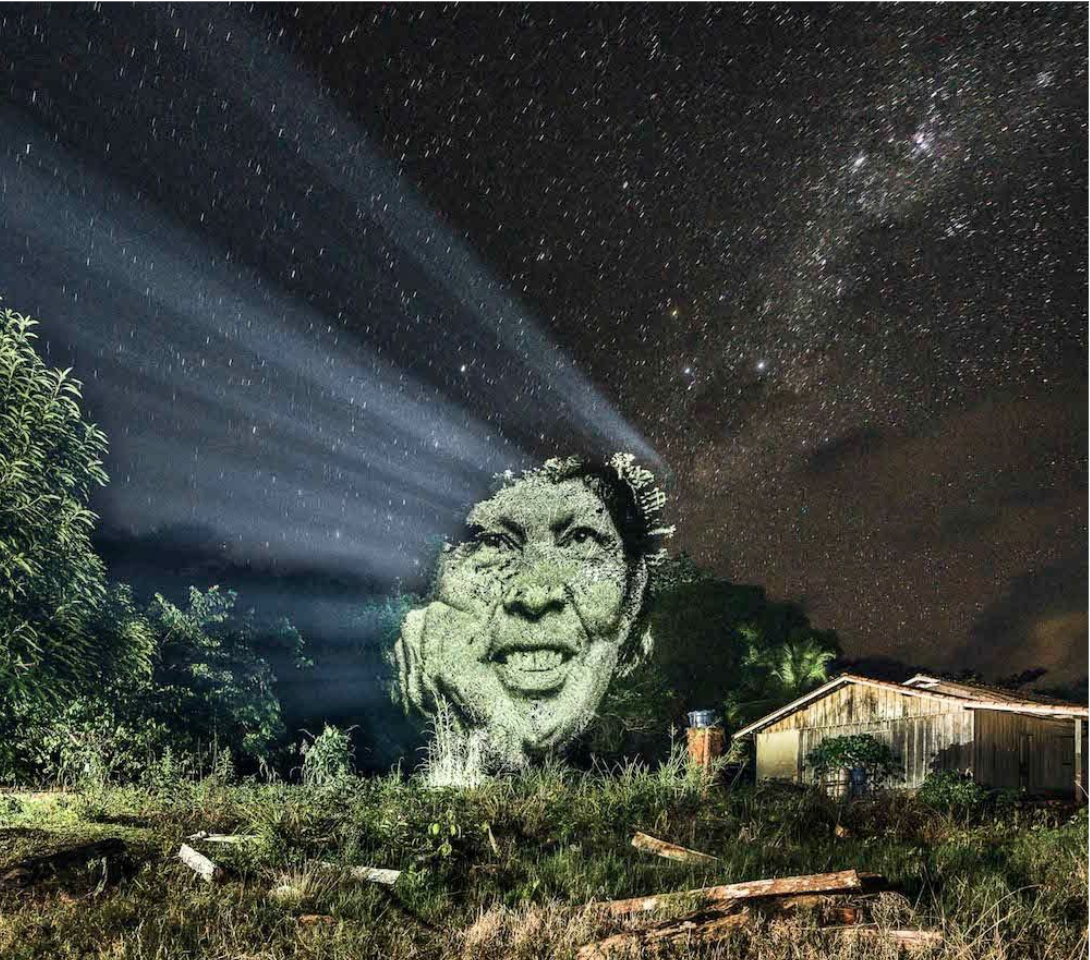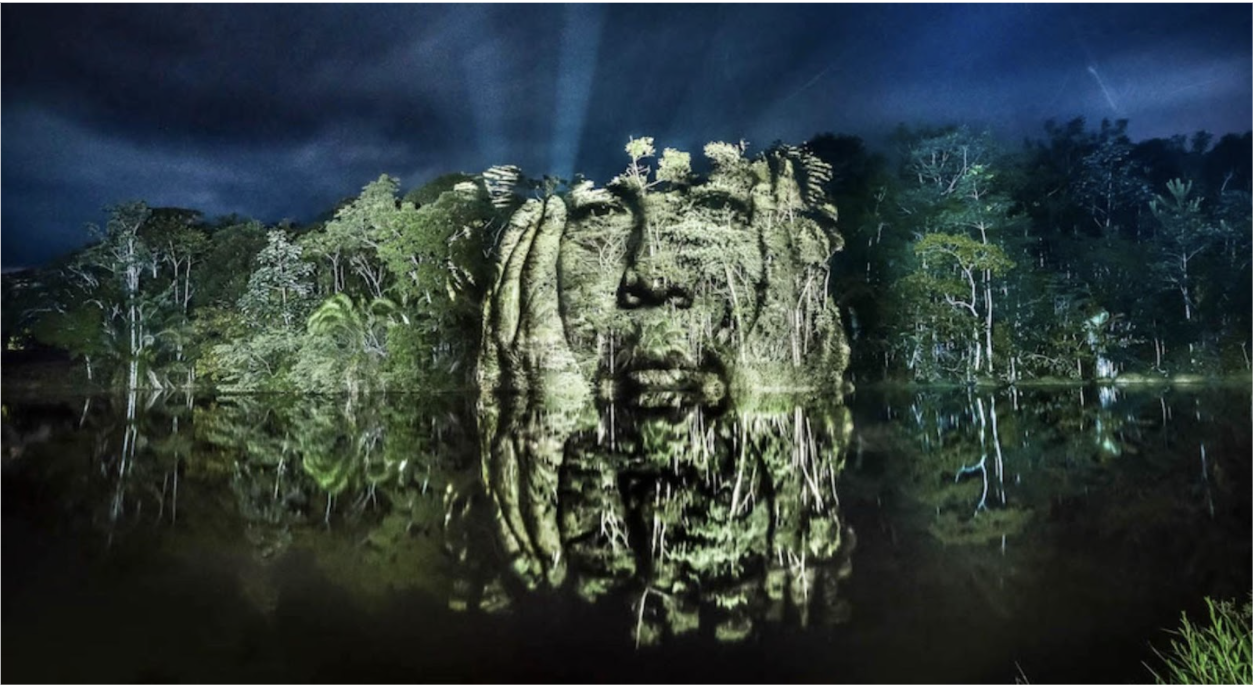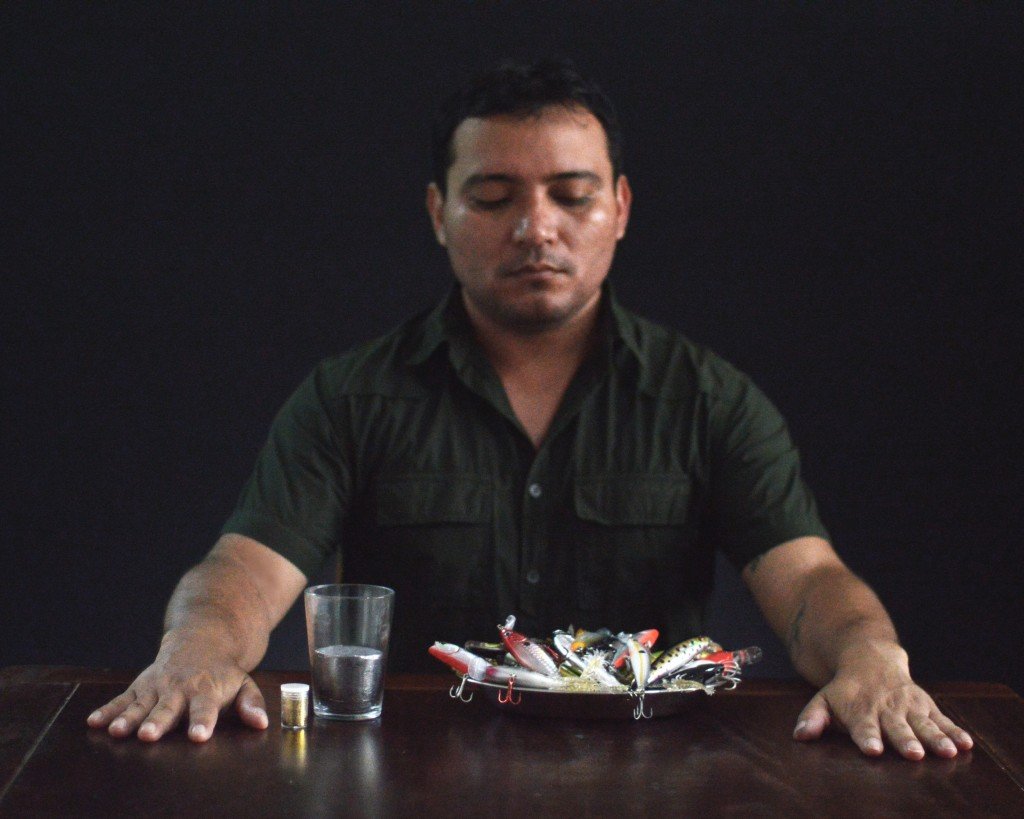Phillipe Echaroux, French, born 1983
The Crying Forest, 2016
French photographer Phillipe Echaroux creates a unique piece by creating striking projections portraits he took of indigenous Suruí people onto the Amazon Forest. The installation was created to raise awareness about the dangers of deforestation and its impact on the ecosystem, which includes the people that live within it; in particular, the Suruí Tribe has been experiencing the ecological violence that comes with extractive practices, and was asked by the Brazilian government to help replant their section of the rainforest, hence why Chief Narayamoga invited Echaroux to form his piece. This work is a significant example of the conservation imaginary as it centers itself on the indigenous people who are an integral part of the Amazon’s ecology, as Echaroux demonstrates by using the forest itself as his canvas. Label by Molly McCarthy Flood
In a photographic series titled ‘The Crying Forest’, French photographer and street artist Philippe Echaroux highlights the devastating issues of illegal logging and deforestation in the Amazon rainforest. To create the series, Echaroux worked alongside the indigenous Paiter Surui people of western Brazil. Echaroux took photographs of members of the community and then projected their portraits onto the foliage of the rainforest. This fusion of human faces among the foliage reveals how deforestation is killing not only the Amazon rainforest but the indigenous communities as well. The photographic series was on display at the Galerie Taglialatella in Paris in 2016. Label by Isabel Williams





